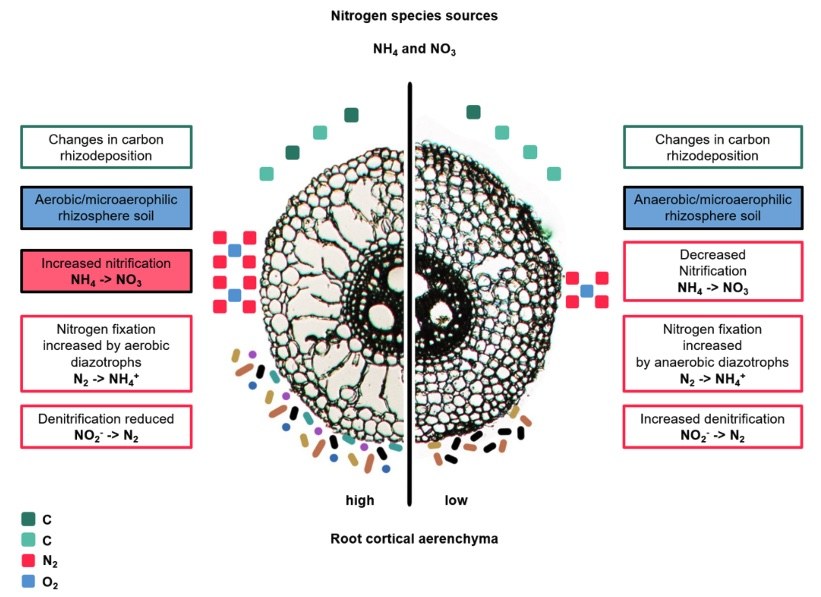
Nitrogen species sources
Authors
Galindo-Castañeda T, C Rojas, U Karaöz, EL Brodie, KM Brown, JP Lynch
Source
BioRxiv
Download Options
Abstract
The root anatomical phenotype root cortical aerenchyma (RCA) decreases the metabolic cost of soil exploration and improves plant growth under drought and low soil fertility. RCA may also change the microenvironment of rhizosphere microorganisms by increasing oxygen availability or by reducing carbon rhizodeposition. We tested the hypothesis that plants with contrasting expression of RCA have different rhizosphere prokaryotic communities. Maize inbreds were grown in two field sites, Limpopo Province, South Africa and Pennsylvania, USA, and their rhizosphere soil sampled at flowering. High- and low-nitrogen fertilization was imposed as separate treatments in the experiment in South Africa. The rhizosphere microbial composition of plants with contrasting RCA was characterized by metabarcoding of the 16S rRNA genes. Geographic location was the most important factor related to the composition of rhizosphere microbial communities. In the site in South Africa, RCA explained greater percent of variance (9%) in the composition of microbial communities than genotype (7%). Although other root anatomical and architectural phenotypes were studied as possible cofactors affecting the microbial composition, RCA was among the best significant explanatory variables for the South African site although it was neutral in the Pennsylvania site. High-RCA rhizospheres significantly enriched OTUs of the families Burkholderiaceae (in South Africa) and Bacillaceae (in USA), compared to low-RCA plants, and OTUs of the families Beijerinckiaceae and Sphingomonadaceae were enriched at the two nitrogen levels in high RCA plants in South Africa. Our results are consistent with the hypothesis that RCA is an important factor for rhizosphere microbial communities, especially under suboptimal nitrogen conditions.

